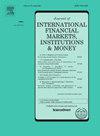银行贷款和超额准备金利息:中央银行对全球信贷供给的影响
IF 6.1
2区 经济学
Q1 BUSINESS, FINANCE
Journal of International Financial Markets Institutions & Money
Pub Date : 2025-07-28
DOI:10.1016/j.intfin.2025.102185
引用次数: 0
摘要
当保持隔夜流动性的机会成本降低时,银行会如何表现?在本文中,我研究了澳大利亚、加拿大、欧洲、日本和英国在2008年危机前采用超额准备金利率(IOER)非常规货币政策的情况。利用这种对货币设计的跨境冲击,我表明,当母国央行引入一种存款机制,为隔夜超额准备金提供报酬时,跨国银行将流动性转移到母国,并减少其跨境信贷供应。信贷供应减少的重点是受影响银行中规模较小、利润较低、流动性较差的分支机构。因此,隔夜流动性机会成本的降低会对信贷供应产生收缩影响,并导致全球宏观经济溢出效应。研究结果表明,当央行是无风险借款人时,银行会削减贷款,这对货币政策、支付系统和流动性监管的设计具有广泛的影响。本文章由计算机程序翻译,如有差异,请以英文原文为准。
Bank lending and interest-on-excess-reserves: Effects of Central Banks on the global credit supply
How do banks behave when the opportunity cost of keeping overnight liquidity is less? In this paper, I study the adoption of unconventional monetary policy with interest-on-excess-reserves (IOER) in the pre-2008-crisis period in Australia, Canada, Europe, Japan, and the United Kingdom. Exploiting this cross-border shock to the monetary design, I show that global banks move liquidity to their home countries and reduce their cross-border credit supply when their home Central Bank introduces a deposit facility that remunerates overnight excess reserves. The credit supply reduction is focused on the smaller, less profitable, and more illiquid branches of the affected banks. Thus, a reduction in the opportunity cost of overnight liquidity has a contractionary impact on the credit supply and results in global macroeconomic spillovers. The results suggest that banks cut lending when the Central Bank is a risk-free borrower and have broad implications for the design of monetary policy, payment systems, and liquidity regulations.
求助全文
通过发布文献求助,成功后即可免费获取论文全文。
去求助
来源期刊
CiteScore
6.60
自引率
10.00%
发文量
142
期刊介绍:
International trade, financing and investments, and the related cash and credit transactions, have grown at an extremely rapid pace in recent years. The international monetary system has continued to evolve to accommodate the need for foreign-currency denominated transactions and in the process has provided opportunities for its ongoing observation and study. The purpose of the Journal of International Financial Markets, Institutions & Money is to publish rigorous, original articles dealing with the international aspects of financial markets, institutions and money. Theoretical/conceptual and empirical papers providing meaningful insights into the subject areas will be considered. The following topic areas, although not exhaustive, are representative of the coverage in this Journal. • International financial markets • International securities markets • Foreign exchange markets • Eurocurrency markets • International syndications • Term structures of Eurocurrency rates • Determination of exchange rates • Information, speculation and parity • Forward rates and swaps • International payment mechanisms • International commercial banking; • International investment banking • Central bank intervention • International monetary systems • Balance of payments.

 求助内容:
求助内容: 应助结果提醒方式:
应助结果提醒方式:


